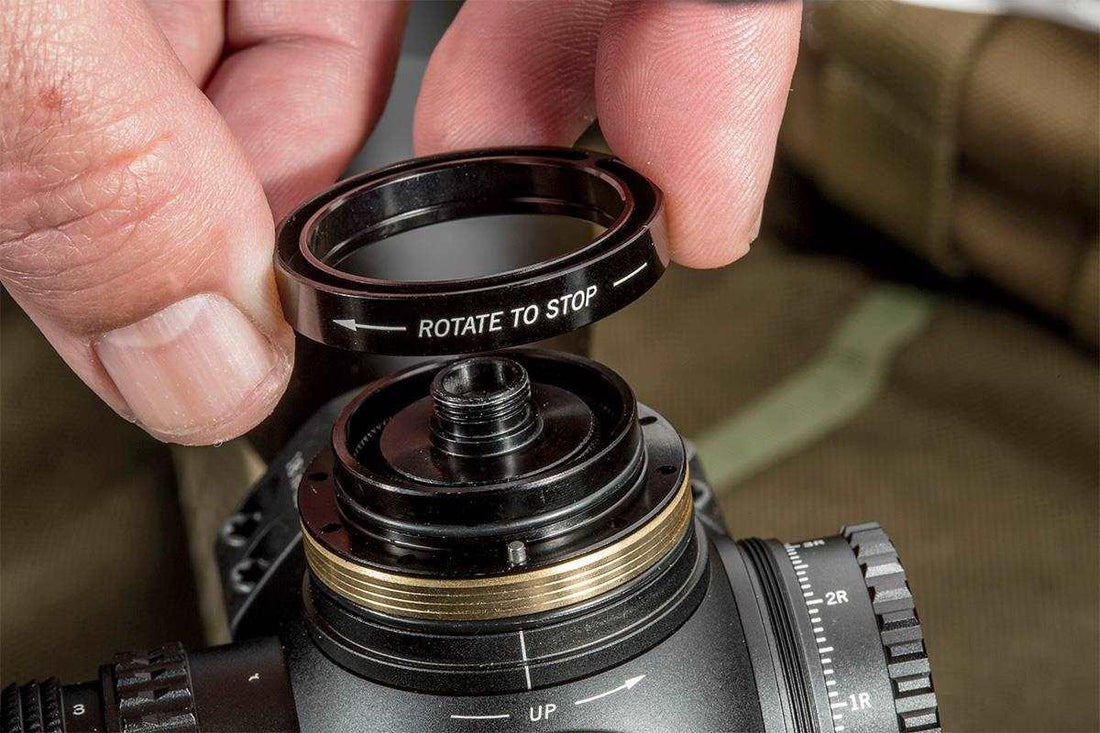
Understanding Zero Stop: How It Works and How to Reset It
Teilen
When it comes to shooting with precision, every one of the details is important. There is a zero stop mechanism, which is an important feature that has the potential to significantly improve accuracy. But can you please explain what exactly zero stop is and how it operates? Within the scope of this blog post, we will delve into the complexities of zero stop, including its advantages and the steps necessary to reset it.
What is Zero Stop?
Zero stop is a feature found in high-quality rifle scopes that allows shooters to return to their original zero point quickly and effortlessly. It acts as a reference point, ensuring that the shooter can consistently and reliably return to their desired zero setting, even after making adjustments for windage and elevation.
How Does Zero Stop Work?

Zero stop works by utilizing a mechanical or digital mechanism within the scope. When the shooter adjusts the windage and elevation settings to compensate for external factors such as wind or bullet drop, the zero stop mechanism keeps track of these adjustments.
Once the shooter is ready to return to their original zero point, they can simply rotate the elevation turret until it stops at the predetermined zero stop position. This ensures that the scope is precisely aligned to the shooter's intended zero setting, eliminating any guesswork or potential errors.
The Benefits of Zero Stop
Zero stop offers several key benefits for precision shooters:
- Consistency: By providing a reliable reference point, zero stop allows shooters to maintain consistency in their zero settings, even after making adjustments.
- Time-saving: With zero stop, shooters can quickly return to their original zero point without the need for trial and error, saving valuable time during competitions or hunting situations.
- Confidence: Knowing that their scope is precisely aligned to their desired zero setting gives shooters the confidence they need to make accurate shots, even under challenging conditions.
How to Reset Zero Stop
Resetting zero stop is a straightforward process that can be done in a few simple steps:
- Identify the Zero Stop Position: Look for a clearly marked indicator on the elevation turret that indicates the zero stop position.
- Rotate the Elevation Turret: Rotate the elevation turret counterclockwise until it stops at the zero stop position.
- Confirm Zero Setting: To ensure that the zero stop is correctly set, test the scope by adjusting the windage and elevation settings and then returning to the zero stop position. The reticle should align perfectly with the original zero point.
It's important to consult the manufacturer's instructions for your specific rifle scope model, as the reset process may vary slightly.
Three-Screw Design
The three-screw design is a popular choice among shooters for its simplicity and effectiveness. It involves three screws strategically placed around the turret housing. These screws act as adjustable stops, limiting the rotation of the turret. By tightening or loosening these screws, the shooter can set the range of motion and lock it in place, effectively creating a zero stop.

Pin Engagement with a Zero Stop Rev Ring
Another type of zero stop mechanism utilizes pins and a zero stop rev ring. The main turret housing is machined with grooves, while the zero stop rev ring is equipped with corresponding pins that engage these grooves. By rotating the rev ring, the pins catch on the grooves and prevent the turret from rotating further once the desired zero position is reached.

Reference Video of RevStop Zero Stop
Both designs mentioned above have their own advantages and considerations for shooters. The three-screw design is often preferred for its simplicity and ease of adjustment. It allows for quick and precise setting of the zero stop, but it may be susceptible to accidental movement if not properly secured. On the other hand, the pin engagement design offers a more foolproof mechanism. Once the pins are engaged with the grooves, the turret is securely locked in place, ensuring the utmost accuracy and reliability.
A zero stop mechanism is an invaluable tool for precision shooters, allowing for quick and consistent returns to the zero point on rifle scopes. The three-screw design and the pin engagement design are two commonly found options in the market. Each design has its pros and cons, and the choice ultimately depends on the shooter's preference and specific shooting needs. Regardless of the type chosen, having a zero stop mechanism ensures a higher level of accuracy and confidence in the field.
Limitations and Considerations
While zero stop can significantly enhance shooting accuracy, it's important to note that some factors like temperature changes, vibration, or equipment abuse can affect the zero settings. Regularly checking and recalibrating zero stop is essential to ensure its optimal functionality.

1 Kommentar
Step 2 in How to Reset Zero Stop is “rotate counterclockwise.” You sure?